The Deadliest Creatures : A Well thought Out Scream by James Riordan

Animals fatally maul, sting, trample, and chew about a million humans per year. Pretty nice of them, given the numbers on our side—the average of 750 million chickens we kill in the U.S. every month, for instance. In an ideal world, no one would ever get mauled by a bear, or contract rabies from a feral squirrel. What is the deadliest creature on earth – what kills the most human beings every year? The most dangerous animal to humans is not the great white shark, often called “the perfect killing machine” and it’s not a large, sharp-toothed predator, but rather a tiny, buzzing insect. Mosquitoes are responsible for around 725,000 deaths per year. Most people consider them nothing more than a summer evening nuisance, but they are the deadliest animal on earth. Mosquito-borne illnesses such as malaria, dengue, West Nile disease, yellow fever, and Zika disease cause widespread suffering and death. The next greatest killer is human beings themselves. About 475,000 people die every year at the hand of their fellow man. In a world of war, murders, and acts of terrorism, this is really not that surprising. Murders are intentional and pre-calculated making them beyond tragic. And they really can’t be attributed to weapons of mass destruction. The Atomic Bomb dropped on Hiroshima killed twenty thousand people. Hitler killed at least three hundred times that many in the six million executed in his concentration camps.
Mediterranean Black Widow
This Black Widow seems like it is 10x more deadly than the original Black Widow with a single red spot on it’s body. Not only do these have a crazier pattern that can scare off predators, but it has unusually large venom glands with a very nasty bite.
There are other examples of intra-species violence—one example that comes to mind is species like spiders, where the females will eat the males after mating. But it’s selected in some ways for benefits—a male spider eaten by a female spider might contribute necessary nutrition. People have made adaptive arguments for human violence, but our species has come up with mechanisms of mass violence on a scale no other species has.
Green Anaconda
Not only are they enormous in size and scary to look at, but they are also one of the largest living snakes that are actually non-venomous. They reside in the moist areas of the Amazon & their choice of weapon is by constriction and will swallow their prey whole. Although they aren’t considered as man-eaters per say, their large-size and strength still makes them extremely dangerous for humans to approach. So don’t.
Eastern Brown Snake
The brown snake is likely responsible for the most snake bite fatalities in Australia Usually more than one meter in length, it’s a very bold snake, so if it come close they can strike out and bite you quicker than you can react to it.
The third most dangerous creature to human beings is the snake. While many of our fears towards snakes are unjustified, they do kill at least 50,000 people annually. Fatal bites by venomous snakes often go unreported which could mean that the figure of 50,000 could be even higher. Public health officials often overlook this potential threat. Despite their nasty appearance snakes are not really out there chasing people down. Most fatalities come from people in developing countries who work and live very closely with the environment around them. In rice fields, and in a lot of agricultural areas, people just come into contact with these very venomous, high deadly snakes—and if the snakes get stepped on, their reaction is to bite. Another reason is that it can be really difficult to get access to healthcare to be treated for snake bites. In places like Europe, Australia or North America we have ready access to a lot of good health care and treatments to prevent anyone from dying. Australia in fact has some of the most venomous snakes in the world but they only have a handful of people a year dying. It’s mostly in these rural, relatively impoverished areas like South Asia, India and Central Africa where people are at high risk of coming into contact with venomous snakes. Some estimates of snakebite deaths in countries like India and Bangladesh are as high thirty to forty thousand people a year being killed by snakes. The many-banded krait, kills about 320 people in 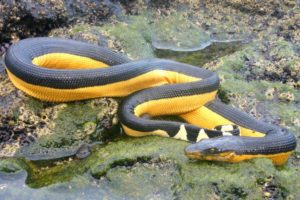 Myanmar every day. But as anti-
Myanmar every day. But as anti-
Yellow Bellied Sea Snake
The yellow bellied sea snake is one the most beautiful snakes in the world. Even though many snakes are extremely lethal, this one in particular stands out from the rest because it’s venom are similar to that of the King Cobra’s, but much more concentrated. One drop of the yellow bellied sea snake’s venom can kill 3 grown men. This venom specifically targets the respiratory system and can paralyze all of the muscles in the body.
venom becomes more prevalent, that is expected to decrease. In the US, on the other hand, about 10 people a year are get killed by venomous snakes —but in some years it’s as few as none, or just one or two people. The problem in the US is that something like 2/3 of people bitten by snakes in North America are men between the ages of 18 to 35, and about half of these cases involve alcohol. And the most common places people are bitten is on their hands or their feet, and it’s usually because either they stepped on a snake by accident, or in the case of a hand, because they were messing with it. There’s a joke in emergency rooms that the last thing someone says before they get bit by a snake is “hold my beer.” The problem is testosterone poisoning more than anything.
The next most dangerous creature is commonly called man’s best friend. Dogs kill 25,000 people yearly. These deaths are not because of vicious maulings by household pets, but rather feral and stray dogs infected with rabies. A surprisingly lethal animal in both North and South America is the cow. Forget about snakes, cougars, bears, etc. Cows are large, strong and not always amenable to whatever farmers or ranchers want to do with them. They look peaceful and most are, but they’re one of the main sources of animal-human mortality, mostly by goring their victims (not bulls, but cows, since there are so many more of them) and sometimes kicking or trampling. Sharks and venomous snakes kill about 1 American per year, cows more than 20. Bees kill a great many people via anaphylactic shock among susceptible people.
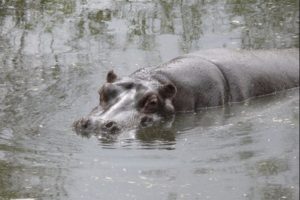 The most dangerous creature in Africa? Hippos, which seem harmless but are pretty vicious. In Australia, kangaroos are the most dangerous because they create so many of the automobile crashes.
The most dangerous creature in Africa? Hippos, which seem harmless but are pretty vicious. In Australia, kangaroos are the most dangerous because they create so many of the automobile crashes.
Although they are mostly herbivorous, they are also highly aggressive and are widely regarded as one of the most dangerous animals in Africa. They have been known to attack humans without provocation even to the point of destroying entire vehicles.
This latter point exemplifies the difficulty of defining ‘most dangerous’ for a ‘moving target’. As human populations change, and move in and out of cities, then proportions of populations expose themselves to different risks, and the answer will change. And as man engages in environmental change (cutting down rainforests, for 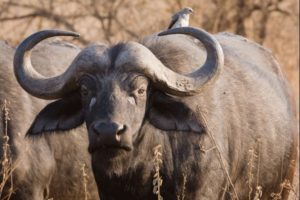
Cape Buffalo
Having never been successfully domesticated, this highly unpredictable creature does not play nice with humans. Throughout Africa it is known as the “widowmaker” or “black death” and is responsible for more fatalities every year than any other large animal on the continent.
example), then suites of ‘dangerous’ animals change in their abundance. We have successfully reduced the number of top predators on the planet spectacularly so that, for example, the Oceanic white-tipped shark, the fish that was to supposed to have killed (and eaten) the most sailors during World War II, is now down to 1% of its former levels. Try floating around in the Indian Ocean now. You’re unlikely to be found by an Oceanic white-tip. The truth is sharks don’t really pose an active threat to humans. In fact we humans face more 
Great White Shark
These legendary predators have a terrible time distinguishing between the edible and the non-edible. There chosen method? Sampling. They sample buoys, boats, surfboards, humans, anything that floats. Contrary to popular belief, however, they really aren’t man-eaters. Humans are too bony, and after the initial bite, they usually leave you to bleed out in the water.
direct threats from vending machines and toilet seats. Most interactions with sharks occur because the shark is curious or investigating potential food. This can lead to an accidental bite. But in most cases, the shark realizes the mistake and just swims off. Unfortunately, this often leaves the human with a some type of bite mark, and many end up with scars. But I think the big picture is that about 100 people worldwide are bitten by sharks [each year]—of those, maybe 10 are fatal. So humans’ irrational fear of sharks is really emotionally not statistically driven.
Indian Red Scorpion
Considered the most deadly scorpion, the Indian Red can be found in India, Pakistan and Sri Lanka. They kill most people because they are so small and like to hide in your boots. If you are ever in this region, make sure you shake out your boots, as this is how they kill more humans
Puffer Fish
Considered one of the most poisonous vertebrates in the world, if you have read our article about the 25 strangest foods in the world, you know that it is a delicacy in Japan. Puffer poison will, however, paralyze your diaphragm and stop your breathing if you fail to prepare it correctly.
Wolves are definitely not sociable the same way domestic dogs are. These wolves have a track record of killing up to 7600 people. And you better believe that a bite from this type of wolf is definitely no joke and will be a fatal one.
Millipede
A close-relative to the centipede that can emit poisonous liquid secretions or cyanide gas through their microscopic pores all throughout their body. The poison can burn through the exoskeleton of ants and can cause severe irritation to larger predator’s skin and eyes. To humans, although they aren’t that much of a fatal creature that can cause harm, they are most definitely something you don’t want crawling around near you.
Polar Bears
Unlike most other animals on this list, the world’s largest carnivore is not afraid of you. It has no natural predators and will eat anything that is even slightly meaty, including other polar bears. Although they generally don’t kill humans, it’s probably because there aren’t many of them around to kill.
But what about the probability of death given that some person has actually ‘stumbled upon’ the animal in question—the ‘oops, I’ve come within 5 m of a hippo/buffalo/lion effect’? I wish it was that easy. The distance plays a role. So to answer that question we need to specify the distance. Being five metres from a stonefish is a banality (treading on one—where distance = 0 m —is not) but it’s a fabulously trivial distance to be from a black rhino. And then there’s the issue of behavior. How we behave, even in an environment with ‘dangerous animals’, will affect our chances of detriment. It is said that we are more likely to be
Blue Ringed Octopus
About the size of a golf ball, don’t let its small stature fool you, it holds enough venom to kill 26 full grown adults and as you may have guessed, there is no antidote. Assuming that your friend ever gets bitten you had better know CPR because you can be sure that within minutes they will be completely paralyzed and unable to breathe. Mother nature, however, shows no mercy and they will maintain their consciousness for the next few hours until the venom is neutralized by their body. This is of course assuming that you, or someone at the hospital, continues artificial respiration.
Box Jellyfish
Killing more people every year than sharks, crocodiles, and stonefish combined, this box of death has been labeled “world’s most venomous animal.” Its venom is so potent in fact, that in some cases treatment consists of little more than last minute CPR.
struck by lightning than be attacked by a shark. But you won’t be struck by lightning if you live close to the South Pole, where there are virtually no lightning storms. Conversely, if you scuba dive around Seal Island in False Bay, South Africa, with speared fish on your belt, your appeal to white sharks will go up enormously—like standing on top of a hill in a lightning storm hugging a lightning conductor. The shark/lightning example is perhaps overkill though, because fish blood from spearfishing victims appeals to behavioural elements of the shark itself. If you want to make the animal death option analogy more simply probabilistic, like lightning, or being hit on the head by a coconut or a falling tree, try swimming in waters with box jellyfish. They are reputed to kill 30 people per year in the Philippines alone (even accounting for the fact that people tend to avoid box jellyfish waters), and box jellyfish are definitely not out to kill people.
From rhino and tigers to ants and spiders, it’s a dangerous world out there. Almost makes you afraid to go outside. Then again, you could live in Detroit.


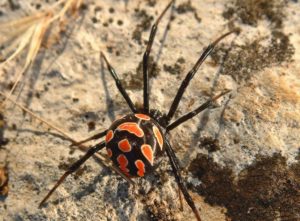

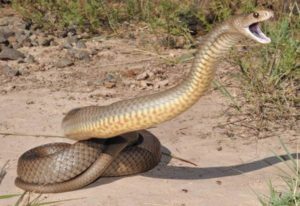
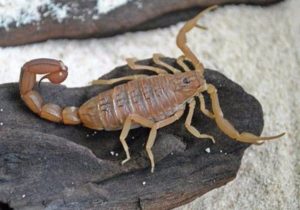



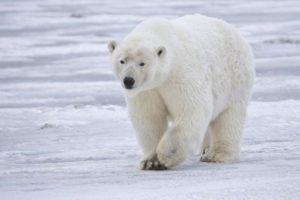

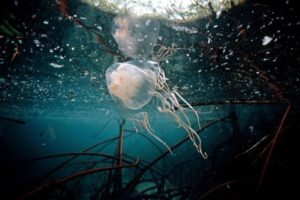
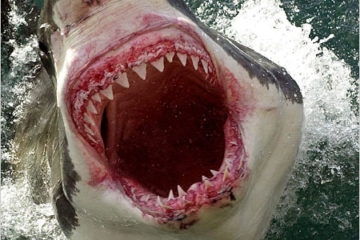

2 Comments
Hippos have also been known to completely ruin a ‘Blind Date.’
Yes, they have, often without warning.